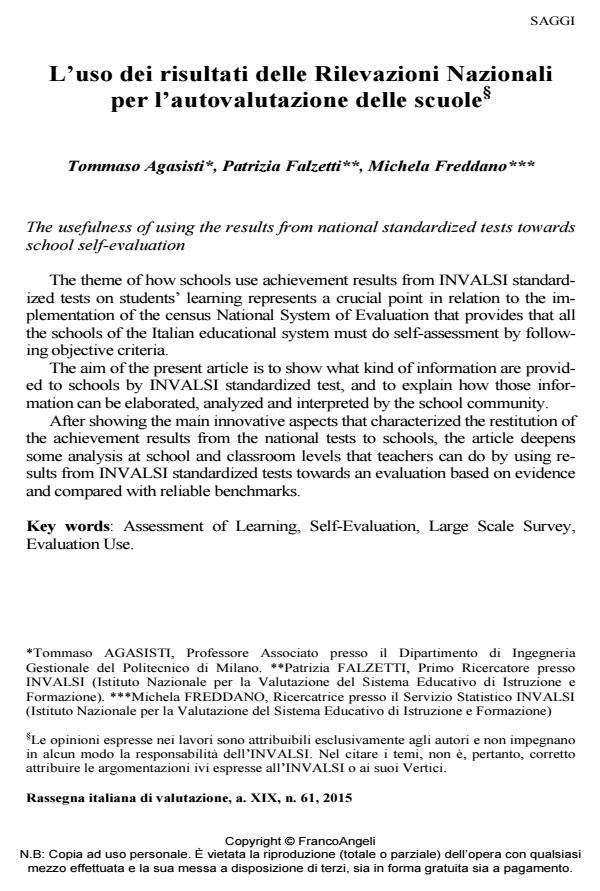The usefulness of using the results from national standardized tests towards school self-evaluation
Journal title RIV Rassegna Italiana di Valutazione
Author/s Tommaso Agasisti, Patrizia Falzetti, Michela Freddano
Publishing Year 2016 Issue 2015/61
Language Italian Pages 21 P. 28-48 File size 434 KB
DOI 10.3280/RIV2015-061003
DOI is like a bar code for intellectual property: to have more infomation
click here
Below, you can see the article first page
If you want to buy this article in PDF format, you can do it, following the instructions to buy download credits

FrancoAngeli is member of Publishers International Linking Association, Inc (PILA), a not-for-profit association which run the CrossRef service enabling links to and from online scholarly content.
The theme of how schools use achievement results from INVALSI standardized tests on students’ learning represents a crucial point in relation to the implementation of the census National System of Evaluation that provides that all the schools of the Italian educational system must do self-assessment by following objective criteria. The aim of the present article is to show what kind of information are provided to schools by INVALSI standardized test, and to explain how those information can be elaborated, analyzed and interpreted by the school community. After showing the main innovative aspects that characterized the restitution of the achievement results from the national tests to schools, the article deepens some analysis at school and classroom levels that teachers can do by using results from INVALSI standardized tests towards an evaluation based on evidence and compared with reliable benchmarks.
Keywords: Assessment of Learning, Self-Evaluation, Large Scale Survey, Evaluation Use
- Editoriale Michela Freddano, in RIV Rassegna Italiana di Valutazione 88/2024 pp.5
DOI: 10.3280/RIV2024-088001 - Self-assessment in vet and higher education: links and further developments Laura Evangelista, Concetta Fonzo, in Community Notebook. People, Education and Welfare in the Society 5.0 2/2024 pp.121
DOI: 10.61007/QdC.2023.3.157
Tommaso Agasisti, Patrizia Falzetti, Michela Freddano, L’uso dei risultati delle Rilevazioni Nazionali per l’autovalutazione delle scuole in "RIV Rassegna Italiana di Valutazione" 61/2015, pp 28-48, DOI: 10.3280/RIV2015-061003